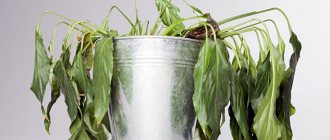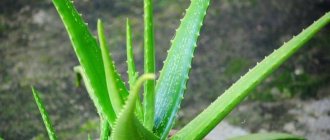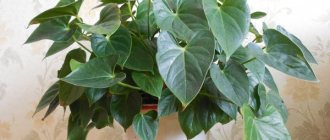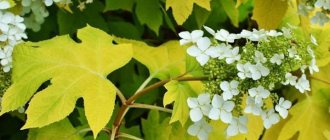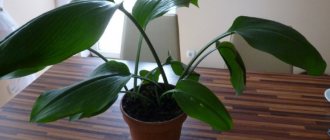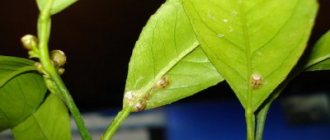A herbaceous perennial such as mantle is often used by gardeners to create a relief green cover in a flower garden and in an area where shrubs grow. This plant is part of the Rosaceae family. The cuff is most widespread in nature in Eurasia, North and South America; it is somewhat less common in New Zealand and Africa. This plant is distinguished by its high decorative value, and it also has medicinal properties. It is popularly called ailment, ram, goose paw, chest grass, bear's paw, God's tear, or interdigital.
Features of the cuff
Mantle is a herbaceous perennial plant whose superficial rhizome is creeping. The shoots reach about half a meter in length; they can have dense pubescence or be bare. Shoots grow from growing points and can either spread along the surface of the soil or rise above it.
Near the base of the stem are the largest carved leaf plates; their petioles are very dense. Smaller leaves are formed from internodes. The shape of the foliage is finger-shaped, round, it is divided into segments with varying degrees of dissection, and its surface is decorated with relief radial veins. Each leaf blade has from 7 to 11 blades, which are colored greenish-yellow or deep green. Sometimes there is a slight dissection of the leaf plate, in which case it has an almost round shape. It can also be very cut or folded. The edge of the foliage is finely toothed. The foliage has short, dense pubescence, because of this, droplets of dew do not fall directly on the surface of the leaves and do not roll down to the ground, but collect together, forming sparkling pearls.
Flowering is observed from June to September. At this time, straight, tall peduncles grow from the internodes, on which small inflorescences-umbrellas are formed; they contain small, inconspicuous flowers of a greenish-yellow hue. But the advantage of these flowers is that they have a pleasant honey smell. In place of the pollinated flowers, small oblong-shaped fruits are formed over time, which are similar in appearance to nuts. A large number of small seeds ripen inside them.
The cuff is ordinary and the cuff is soft. Decorative and medicinal perennial
Trimming
If given the opportunity, the cuff can easily become out of control. To avoid this, cut flowers as soon as they begin to wilt to prevent self-seeding.
If a plant begins to grow in an unwanted area, pull it out quickly. If necessary, the entire plant can be pruned; this will stimulate new growth and, in some cases, a second bloom.
Reproduction methods
To propagate the cuff, generative (seed) and vegetative methods are used.
Growing from seeds
From seeds, mantle is grown through seedlings. To do this, a fertile, loose soil mixture is poured into the box, which allows air and water to pass through well. In this case, it is recommended to make a drainage layer of expanded clay or pebbles at the bottom of the container. Seeds are sown to a depth of 0.7 to 1 cm. Sowing is carried out in March or November. If sowing was carried out in the fall, then 15 days after sowing the seeds, the boxes are moved outside. It is placed in a place that has reliable protection from direct rays of the sun and drafts.
In spring, move the crops to a well-lit and warm place. Since the seeds underwent natural stratification during the winter, seedlings appear relatively quickly. After they have formed 2 to 4 true leaf blades, they should be picked into individual peat pots. Cuff seedlings are planted in open ground in the spring after warm weather sets in (sometimes this happens already in the last days of April). The bushes will delight you with their flowering in the first year of growth.
Reproduction by dividing the bush
A heavily overgrown bush can be divided into several parts. Quite often lodged shoots produce roots themselves. If necessary, shoots that have their own root system can be cut off from the mother bush using a sharp tool. Pull the shoot out of the soil and plant it in a permanent place. When planting bushes, the distance between them should be at least 0.3 m. It is best to propagate the cuff in this way in early spring.
Growing from seeds
The flower can be grown from seeds. If you want to try propagating mantle from seeds, sow outdoors immediately after all frosts.
Barely cover the seeds and water them well. You can also start the seeds indoors a couple of months before your transplant date. It takes about three to four weeks for the seeds to germinate, so be patient.
Given that the flower is easy to grow from seed and is capable of free-seeding itself, many gardeners start with at least one plant and wait to see how well it self-seeds.
Planting and care in open ground
Choosing a landing site
To plant the cuff, it is recommended to choose an open sunny area; a place in slight shade is also suitable. It is not recommended to plant it under trees with a lush, dense crown; in this case, the flower will grow poorly and get sick relatively often. The soil should be light, rich in humus, and also have good air and water permeability. Loamy or sandy loam soil, which can be slightly acidic or neutral, is best suited.
The cuff is soft. Landing instructions. GardenWithYourHands
Cuff care
The cuff should be watered frequently and generously. Do not allow liquid to stagnate in the ground, because this can cause fungal disease to affect the root system. If desired, from time to time you can loosen the surface of the soil near the bushes.
Such a plant can suppress the growth of weeds, which makes caring for it much easier. Experts advise fertilizing twice or thrice during the season. The cuff responds best to the addition of organic matter; for this, an infusion of chicken manure or mullein, as well as a fermented infusion of weeds, is most often used.
Trimming
Such a fast-growing plant requires systematic pruning. This will help control the growth of the cuff. And thanks to timely pruning of wilted inflorescences, self-seeding will be avoided. One bush in the same place can be grown for several decades, and it will still retain its decorative properties.
Wintering
This garden crop is highly resistant to frost. Moreover, it winters well in open ground, even in mid-latitudes. If the frosts in winter are very severe, then in the autumn, sprinkle the bushes with fallen leaves. With the onset of spring, the bushes are cleaned and pruned for sanitary purposes, removing all those shoots that have dried out or been injured. Remember that this plant grows quickly, so there is no need to be afraid to shorten its shoots.
Diseases and pests
If you care for the cuff correctly and choose a suitable area for it, then it will practically not hurt. Powdery mildew occurs when grown in damp, heavy soil. Black rust affects those bushes that grow in the shade.
Most often the plant suffers from slugs and snails. To prevent gastropods from reaching the cuff, the surface of the earth around the bushes is sprinkled with crushed egg shells or wood ash.
Medicinal properties
This wonderful plant contains ascorbic acid, lipids, phytosterols, lingin, tannins, various micro- and macroelements, bitterness, lecithin and many other useful substances.
Properties of the cuff:
- wound healing
- hemostatic
- anti-inflammatory
- astringents
- disinfectants
- diuretics
- choleretic
- calming
- antitumor
- thins mucus
- enhances lactation
- normalizes metabolism
- rejuvenates the skin and the entire body
- good effect on the cardiovascular system
- stabilizes hormonal levels
- normalizes blood sugar
- improves health
Used in the form of decoctions, tinctures, tea, plant juice and extract can also be used. Taken both internally and externally.
Types of cuffs with photos and names
There are about 600 different types of cuff found in nature. Often different species look exactly the same, and only a specialist can distinguish them. The species most often cultivated in the garden are those described in detail below.
Common cuff (Alchemilla vulgaris)
This species has medicinal properties and is quite widely used in medicine. On the surface of its erect green stems there is pubescence. The folded, rounded leaf blades have 7 to 10 radial veins. Flowering begins in the last days of May and is not abundant. False-umbrella-shaped inflorescences consist of very small pale green or yellowish flowers. Since the rhizome of the plant is creeping, it is able to grow quickly, capturing more and more new territories. Some gardeners consider this type of mantle to be a weed because it is distinguished by its vitality and is almost impossible to eradicate.
Soft cuff (Alchemilla mollis)
This species produces spreading bushes of a spherical shape, and all due to the fact that its branched shoots are erect, and they reach a height of 0.45 to 0.5 m. The rich green lobed leaf plates of a round shape have dense short pubescence. They are divided into 9–11 concave sectors. The bushes bloom from June to August. At this time, a large number of tall inflorescences are formed, consisting of yellowish-green flowers, reaching about 0.3 cm in diameter. The seed material fully ripens in the first days of September.
Red-petioled mantle (Alchemilla erythropoda)
This groundcover perennial reaches a height of no more than 15 centimeters. The underside of the leaf blades, as well as their petioles, have a pale red tint. The rounded leaves are divided into 7–9 sectors, and they are colored greenish-blue. In June or July, panicles open on the bushes, which contain yellowish flowers, reaching about 1 cm in diameter.
Conjoined cuff (Alchemilla conjuncta)
The rising branched stems reach a height of no more than 20 centimeters. The shoots are decorated with round-shaped leaf plates deeply dissected into seven lobes, the surface of which is glossy, smooth, and rich green in color. The underside surface has dense pubescence of a silvery color. Flowering begins in July. The color of the flowers is yellowish-green.
Decent place in the garden
Experienced gardeners actively use the cuff in the landscape design of their backyard. The plant effectively smoothes out the color scheme of plants in the flowerbed.
It is often planted:
- in the foreground there are flower beds;
- along artificial reservoirs;
- at the edges of garden alleys;
- for framing flower beds.
The openwork foliage of the soft cuff fits original into the alpine slides. She is able to decorate rock gardens, ridges and multi-tiered flower beds. For example, its wide leaf blades successfully hide the trunks of ornamental trees and shrubs.
As you can see, even a novice gardener can plant a soft cuff and care for it. The main thing to remember is that she does not like too damp places. It takes root wonderfully in open and slightly shaded areas. The plant is propagated by seeds, dividing bushes and cuttings. They are planted in a permanent location in April or early May. Let us pay attention to the modest grass under our feet.
Cuff in landscape design
The cuff is very popular among landscape designers due to its openwork leaf plates. It allows you to create green cover in the garden. Most often, for planting such a plant, they choose the sides of garden paths, slopes, or an area located near rocky masonry. To frame flower beds, low-growing varieties of mantle are used. Thanks to its richly colored foliage, flowering crops look more impressive.
The yellow-green flowers of this perennial are distinguished by their unique beauty and can also decorate your garden, just like its foliage. Experts recommend planting the cuff next to delphinium, daylily, thyme or astilbe.
Suggested Use
Thanks to the description of the mantle, it is usually used as a ground cover and creates a beautiful edging when stored in limited quantities.
Cut flowers are ideal in floral arrangements, yellow flowers go well with anything.
It is also great for use in containers, pots and garden plots.
What is the plant afraid of?
This herbaceous perennial is quite disease resistant. In some cases, when planting mantle under woody plants, the leaves may be affected by black stem (looks like rust).
You can fix the problem by simply transplanting the bush to another place.
In addition to the black leg, powdery mildew can affect the cuff. This phenomenon is observed extremely rarely and is only possible when planting the plant in dry, poor soil.
Application
In cooking
Cuff leaves are quite often used in cooking. And all because they contain a significant amount of ascorbic acid. They are added when preparing soups, salads and used instead of cabbage. In this case, it is best to use young leaves that have not yet unfolded. And it is advisable that this plant grows in the shade, and not in the sun, the taste will depend on this. Older plants can impart a bitter taste to dishes.
In medicine
Quite often, the cuff is used for gynecological purposes. Thanks to this plant, you can regulate the menstrual cycle, cure infertility and even maintain pregnancy in some cases. But it is important to understand that the cuff can be used for such purposes only under the supervision of the attending physician.
Teas from this plant can also help reduce the manifestations of type 2 diabetes. Tinctures can improve the functioning of the intestines and pancreas, and normalize sugar levels.
If you take the plant without having any health problems, you can saturate your body with minerals, vitamins and other beneficial substances.
When losing weight
The cuff is also actively used for weight loss. Due to the fact that the plant contains a large amount of flavonoids, it can perfectly smooth the skin. Therefore, an anti-cellulite agent is made from the cuff.
To do this, you will need to mix 25 grams of dry plant with 15 grams of dried parsley. Pour boiling water over all this and leave for 1.5 hours. Next, the mixture is filtered and consumed twice a day, morning and evening, 15 grams each.
At home
In early spring, various soups and salads are made from the shoots and leaves of the cuff. The plant is also harvested for the winter and used for cooking in the future.
In cosmetology
If you want to get rid of cellulite externally, then pour 30 grams of dry herb with 300 grams of boiling water and let it brew for 1 hour. Then soak gauze in the infusion and apply to problem areas.
This is interesting
The Latin name for the cuff, Alchemilla, comes from the Arabic word alkemelyeh, which means “alchemy.” Alchemists attributed miraculous properties to this plant. Using droplets of water that were "miraculously" held on its leaves, they tried to obtain the elixir of life and the philosopher's stone. In fact, drops of rain and morning dew, like beads, do not roll down simply because of the special shape of the leaf blade and its pubescence.
The plant received its Russian name “cuff” for its leaf shape, reminiscent of starched lace cuffs. And in Europe, with the advent of Christianity, it began to be called “the robe of the Virgin Mary” for the similarity of the leaves with the attire of saints.
Contraindications
There are no side effects reported at this time. However, there are contraindications to the use of the cuff.
First of all, these are people prone to severe allergic reactions, as well as children under 16 years of age.
You also need to be extremely careful in the amount of its use; excessive consumption can cause severe intoxication of the body, an allergic reaction, dyspepsia, and frequent urination.
